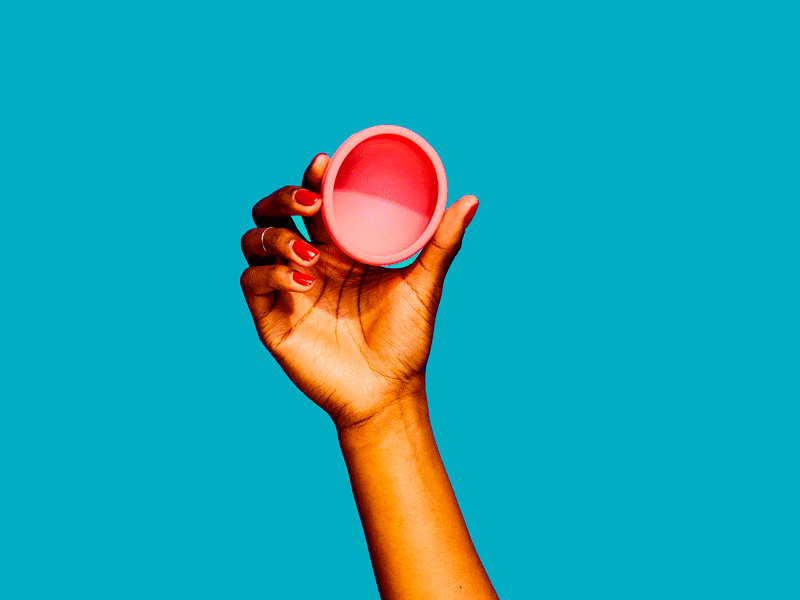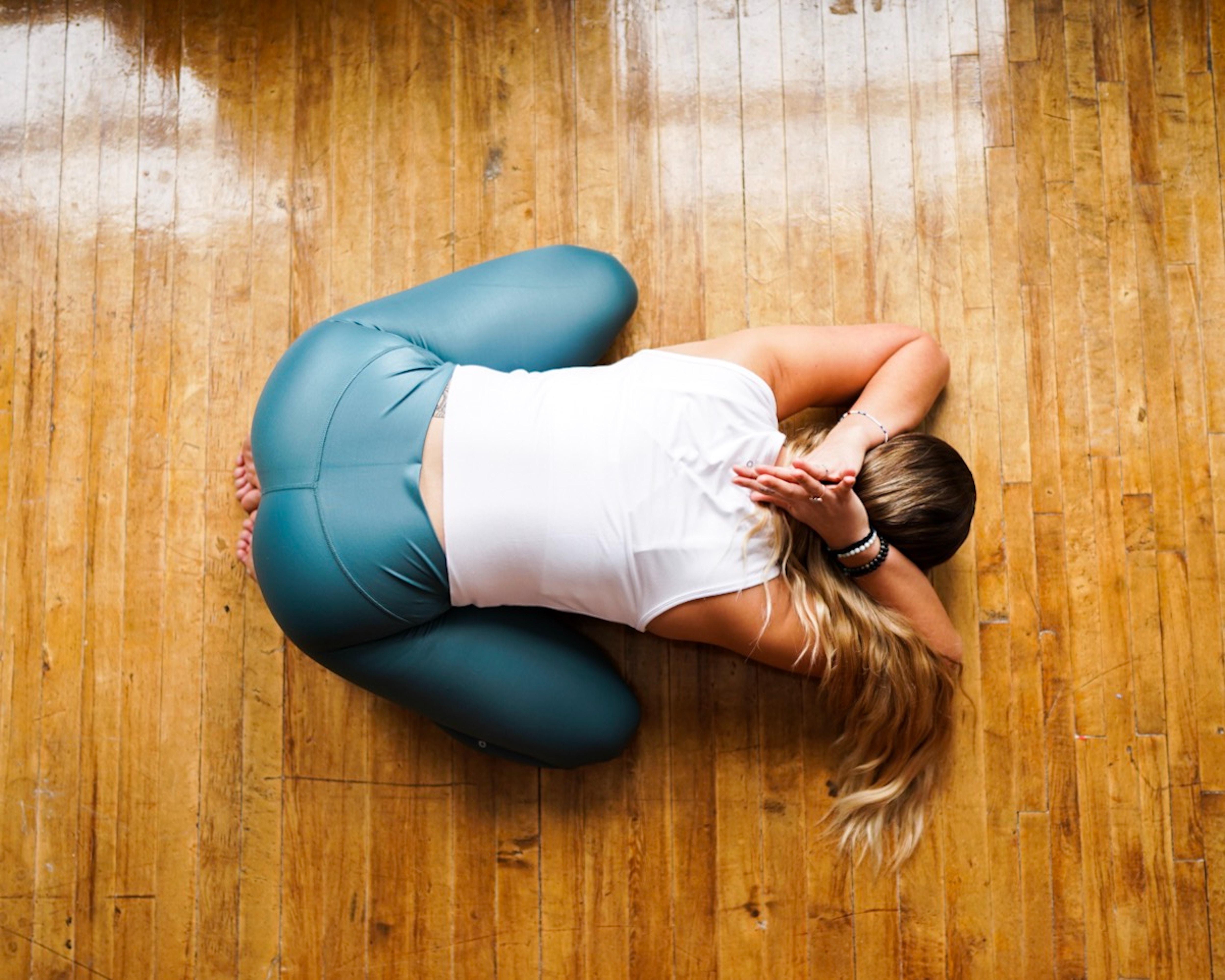Full disclosure: My period gets weird when I exercise. It seems like just looking at my Mind-Body app gives me period-like cramps. Mid-cycle, around when I’m supposed to be ovulating, I get all the PMS symptoms (simultaneously) when I do a class. Exercise seems to make my cramps worse! And then when I’m actually on my period and I hit the gym, bloating, cramping, moodiness all disappear about 15 minutes in. How periods and exercise affect the body a topic that’s close to me – because I experience it every damn day. Well, not technically, but for most of my cycle, so it feels like every damn day nonetheless.
It’s a head scratcher for sure. But I‘m not alone. According to Pinterest’s new Global Mindful Menstruation report, 29 per cent of period-having Canadians aged 18 to 24 admit they don’t understand menstruation, compared to an average of 14 percent of those aged 25 to 50. And 88 per cent aged 18 to 24 want to know more, and 70 per cent of those aged 25 to 50. The social platform used Opinium Research to surveyed 1,000 people (18 to 50) per country in the United Kingdom, the United States, Canada, France, Germany and Japan.
So, if your period gets weird when you work out, I’m with you. Being aware of your period is good. And Dr. Nicholas A. Leyland, chief in the department of obstetrics and gynecology at Hamilton Health Sciences, and sport and exercise physiologist Esther Goldsmith, agrees. I connected with Leyland when he was speaking on behalf of Orlissa, a newly approved Health Canada medication for endometriosis pain. And Goldsmith works for Orreco and FitrWoman, a period monitoring app for active women. I picked their brains on the idiosyncrasies of our periods and exercise.
Does exercise relieve period symptoms?
Before you eye-roll the advice to stick with your run when you’re on your period, hear this. “Research has shown exercise can help improve our energy levels, help manage symptoms and even lower estrogen,” says Dr. Leyland. Estrogen increases prostaglandins, which is what causes those pesky, annoying period symptoms, including monthly pain.
My periods are heavy, should I avoid working out?
As said above, you shouldn’t avoid exercise during your period. But you can lessen the flow, so to speak. Dr. Leyland recommends non-steroidal anti-inflammatory meds, like Advil. “They are useful to reduce dysmenorrhea or pain with menstruation.”
My tracker says I’m going to get my period on race day – what can I do?
If you are planning for a running event and see that it’s around the time of your period, Goldsmith says it’s worth noting, and you can make some tweaks to your training and your diet. “One of the key times in a women’s menstrual cycle that could affect athletic performance the most is right at the very end, in the [mensturating] phase. This is where estrogen and progesterone levels drop off, resulting in an increase in inflammation,” she says. “Many women, both athletes and non-athletes, experience an increased number of menstrual cycle-related symptoms at this time, including sleep disruptions, mood changes, cramps, and pain.” Her recommendations (which are part of the FitrWoman app) are to increase antioxidant intake, having a hot shower before bed to help with sleep, and more. She doesn’t recommend planning the fitness event around your cycle, but instead, planning your training program around your cycle, focussing on sleep and pain management.
Should I plan my exercise recovery around my period?
Who doesn’t want to nurse period cramps on the couch with a Netflix marathon instead of actually running one? And that could be a natural response. “There is some research to suggest that recovery time can differ across the menstrual cycle,” says Goldsmith. “At the very start and end of your cycle, baseline inflammation levels are higher, which means that the body has to work harder to recover from any exercise-induced inflammation.”
I spot when I exercise, should I be worried?
The short answer: No. “This is not uncommon [and] it does not affect fertility,” says Dr. Leyland, about mid-cycle spotting during exercise. The long answer: Get checked.
Our hormones can be sensitive, and exercise can affect them in minor and major ways. Working out hard can cause spotting, but it can also affect ovulation, especially if you’ve lost weight or don’t weigh a lot. “This can be common in athletes and women with the anorexia nervosa disorder. If you experience an irregular period, or it stops completely, it is always best to consult with a health care provider.”
Which type exercise is better for hormones: Cardio, strength or low-impact?
You knew we were going to say this, but we’ll say it anyway. Exercise is always good for you, and for your period. So, do it all. Make sure your workouts include both aerobic and strength exercises. “Yoga can also help relax your body and potentially reduce period-related symptoms,” adds Dr. Leyland.
Why don’t some women have any issues with their period and exercise?
Some of us are blessed period unicorns and some of us have to deal with period symptoms. It generally comes down to how intensely you exercise, your lifestyle and your body weight. To find out the best intensity and balance for you, talk to a health care provider and a fitness expert, recommends Dr. Leyland.
Is my period is too out of whack to exercise?
Despite what’s said above, if you feel your period is just too much to deal with to even consider doing a single burpee, trust your gut and talk to your health care provider. “Disabling or increasingly painful menstrual cycles can have a dramatic impact on a women’s lifestyle and may interfere with day-to-day activities like exercise,” says Dr. Leyland.
Goldsmith points to several menstrual-related conditions that can hamper your love for sports and exercise, especially when it affects performance. “Whilst regular exercise can help reduce some of the symptoms of endometriosis, it can also be the last thing that sufferers feel like doing when symptoms are very severe,” she says. “Primary dysmenorrhea – where the pain is not connected to any other condition such as endometriosis – is thought to occur due to excessive amounts of inflammation. It is unlikely that sufferers will feel able to exercise when menstruating as a result of the pain.”
I’ve never been diagnosed for endometriosis for example, and everything has checked out as “normal.” But don’t suffer from symptoms needlessly. A recent-ish study from the University of Ottawa, of 30,000 Canadian women, found that they lived with the symptoms and often wait over five years for a diagnosis.
And there is premenstrual dysphoric disorder (PMDD). It is a mood disorder, says Goldsmith, which can affect motivation and energy levels, thus affecting not just performance, but participation as well. “There are a number of treatment options to be discussed with your doctor, [and] these can include selective serotonin reuptake inhibitors, hormone agonists/antagonists and use of techniques such as cognitive behavioural therapy.” She also points to polycystic ovary syndrome, energy deficiency and amenorrhea that can negatively affect physical performance.
If your period negatively affects your fitness or other areas of your life, Dr. Leyland recommends talking to your healthcare provider about taking oral contraception, NSAIDS or Orilissa to help with inflammation. Also check out yourperiod.ca, too. “It’s important to know your body and seek advice or medical attention if you need it.”
Article was originally published on January 7, 2021.
EXTRA! Outsmart your exercise/period challenges
Goldsmith also offers these four nutritional tips for exercise recovery around your menstrual cycle.
- Track Cravings: Take note of your cravings, as your metabolism can shift throughout the cycle. Week one, your body tends to crave carbohydrates. Week two, it’s fats. “This could be useful to know in training, as it means that preloading with carbohydrate is more advised at the start of the cycle, whereas, towards the middle and in the second half of the cycle, fuelling with carbohydrate during exercise over 60 minutes is more important,” she says.
- Up Post-Workout Protein: When exercising the first half of your cycle when progesterone levels are high, she recommends getting enough protein within 30 minutes after your workout to help with muscle protein breakdown.
- Iron, Woman: During your period, you’ll want to consume iron-rich foods, such as good quality red meat, dark leafy greens, legumes and mussels in combination with a vitamin C source to help with iron absorption.
- Eat Clean(er): Diet can also play a big part in menstrual-cycle related symptoms. Reducing your intake of saturated fat, and increasing antioxidant-containing foods and omega 3 fatty acids can help to reduce the severity of symptoms. This is because menstruation is an inflammatory process, and this inflammation can cause PMS – so foods to help reduce inflammation could help with symptoms.
Wouldn’t it be nice to nix your period?
So, we heard some new period product news, and thought, since we were working on this story, we would tell you all about it, too. Canadian feminine company nixit (answering our monthly wish with their name) created the below diaphragm-inspired menstrual cup, recently authorized for sale by Health Canada. The one-size cup can be worn up to 12 hours (no worrying about changing before or after your workout). It’s made of squishy medical-grade silicone that is bisphenol A-free. (BPA is a chemical used in plastics that may have effects on hormones when absorbed at high levels. It is banned in Canada in children’s products.) You just squeeze it, insert it similar to how you would a tampon (no string, so your hands go in a bit deeper) It sits at the fornix, just above the vaginal canal (where other period products are placed). Not only can you work out with it inside (like all period product ads shown in the early 2000s!), you can also have sex too. So it’s good for all kinds of physical activity.

Hi there! You look like someone who’s interested in staying on top of all the latest wellness, beauty and fitness trends. Why not Join The Fleet?

